Protects equipment from unforeseen situations! Which voltage stabilizer is best for a gas boiler
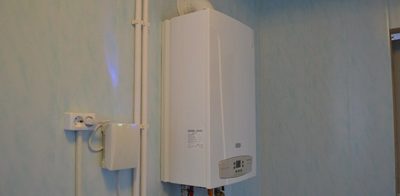
In the private sector it is not uncommon power surges, and gas boilers are high-precision equipment that is sensitive to the quality of the consumed current.
This issue is resolved by a voltage regulator. In case of unexpected power supply problems, this The device protects the boiler board from damage and extends the service life of the heating system. Stabilizers differ in both design and operating principle, so it is important to know how to choose the right device. Household stabilizers come in three types: electromechanical, thyristor, and relay.
Content
How to choose a good voltage stabilizer for a gas boiler
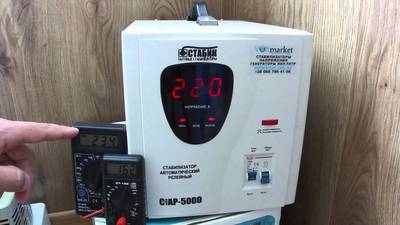
The main parameters when choosing a voltage stabilizer for a gas boiler are: regulator type, electrical power and voltage range.
When choosing, they are guided by the passport data of the devices and the results of measuring the voltage in the network. at different times of the day.
There are many models of regulators on the market, and to choose the right device for the heating system, the following parameters are taken into account.
What electrical power can be used?
The boiler's electrical power is specified in the technical data sheet. The average input power of heating systems is 100-200 WIn modern heating systems, especially in wall-mounted boilers, there is a built-in circulation pump.
The starting current of such a device exceeds the power consumption 4-5 timesWhen choosing a stabilizer, it is recommended to multiply the power specified in the boiler passport by 5 and add another 10%. This will be the appropriate value. If the documentation indicates the power 200 W, this means that the stabilizer will fit 1 kW.
Important! Some manufacturers indicate power not in Watts, but in Volt-Amps. This may mislead the buyer, as this figure will be higher than in Watts.
To find out the approximate power rating in watts, you need to multiply the Volt-Amp reading by 0.7.
Regulation time, which is better
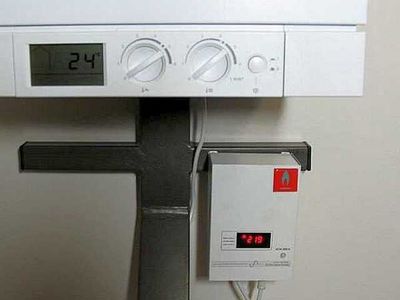
Stabilizer response it doesn't happen right away. It is important that the boiler electronics do not become damaged during this time.
This parameter indicates the magnitude of the voltage drop that the stabilizer can compensate for in a period of one second. The shorter the regulation time, the better for the boiler.
Indicator 20 W/s means that the device will correct the voltage drop in one second at 20 W, which is quite small and not enough to protect the electronics of the heating system.
They react the slowest electromechanical stabilizersSuch devices cannot reliably protect the boiler board from burnout, so this type of transformer is usually not used for boiler rooms.
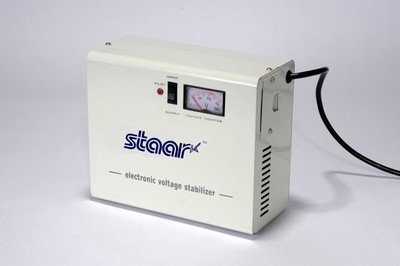
Relay stabilizers react to voltage surges faster, coping with electrical current surges in 0.1-0.2 secThis speed is quite sufficient to protect the gas boiler.
The best ones are thyristor regulators, their voltage drop processing speed is 10-20 ms, such a jump will not affect the electronics of the heating device in any way.
High voltage protection, why is it needed
Stabilizers with such protection protect the boiler from high-voltage interference and power surges, such as, for example, a lightning strike.
Cooling
The stabilizers have a cooling system three types:
- Natural.
- Forced.
- Oily.
Nowadays, it is increasingly possible to find on the market regulators with natural cooling system. There are no fans in such devices, which means that their operation is silent, there are no blades that suck dust into the system. But this design is more expensive because it uses very powerful power elements. A regulator with this type of cooling is worth buying if it will be installed in a bedroom where silence is required.
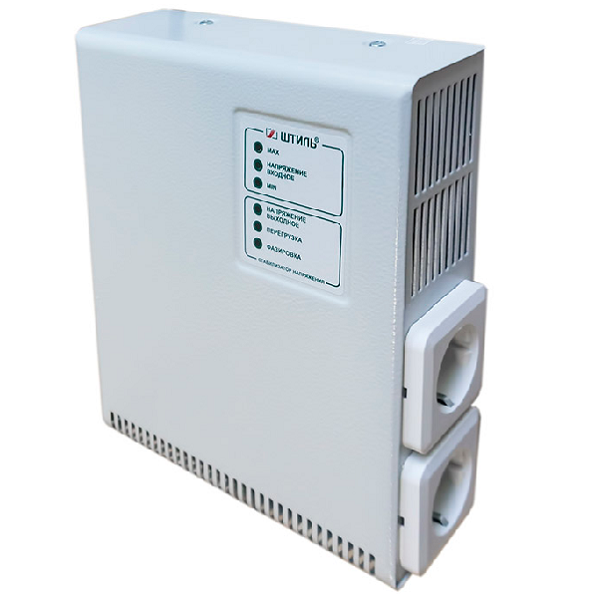
Photo 1. Voltage stabilizer for the Shtil gas boiler with natural cooling.
Most stabilizers contain forced cooling system, which operates using high-performance, low-noise fans that pump air to the power parts of the device. The system operates automatically, responding to critical temperature readings.
Oil cooling It is rare. This type of equipment is mainly used for outdoor equipment.
Selection by operating voltage
Stabilizers have a lower voltage threshold 140-160 Volts, If the network indicator is even lower, you should contact the local power grid maintenance organization. Even budget regulators have an upper limit 250-260 VoltsWhen the electrical current in the network goes beyond this range, the fuse will trip and the stabilizer will simply turn off the boiler.
It is not recommended to purchase a regulator with lower characteristics, otherwise the boiler will constantly switch off, which is unacceptable, especially in winter. The wider the voltage range, the better for the boiler electronics, but the higher the cost of the regulator.
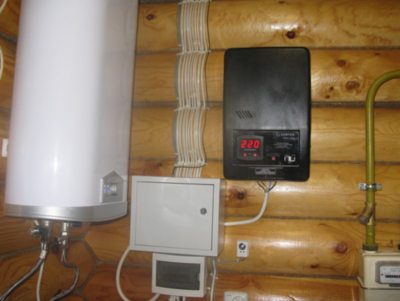
When choosing a stabilizer for a boiler, a tester measures the voltage readings in the electrical network at different times of the day and night.
The lowest voltage is usually observed between 20:00 and 23:00, the highest is unpredictable. A certain reserve is added to the smallest and largest values, and based on the data obtained, a suitable regulator is selected.
Average voltage ranges The different types of regulators have the following:
- Relay: 120-260 Volts.
- Mechanical: 150-250 Volts.
- Thyristor: 120-300 Volts.
Degree of protection
This indicator indicates the degree of protection of the device itself from environmental influences: dust, water, etc. Usually, boiler stabilizers have protection class IP20, which means not hermetically sealed.
How to choose the type of stabilizer
The type of stabilizer should be selected based on the conditions in which it will operate and the boiler parameters.
Electromechanical stabilizer
The current collector moves along the transformer turns using a drive. The voltage is regulated by changing the number of turns of the secondary winding of the coil.

Photo 2. Voltage stabilizer for a gas boiler of the electromechanical type. Manufacturer "Resanta".
The whole process controlled by automation. Such regulators are purchased mainly for televisions and refrigerators; they are not recommended for boilers.
Attention! Install this type of transformer near the boiler with open gas chamber No! During operation of the device, a spark may form, which is dangerous in combination with gas!
Pros:
- Resistance to overload.
- With regular maintenance they work up to 5 years.
- Stabilization accuracy 2-3%.
Cons:
- Cannot work properly in cold conditions.
- The current collector brush needs to be replaced every 3-4 years.
- Reaction time - 10 volts per second.
- It makes noise when working.
- An open spark is formed.
Thyristor stabilizer
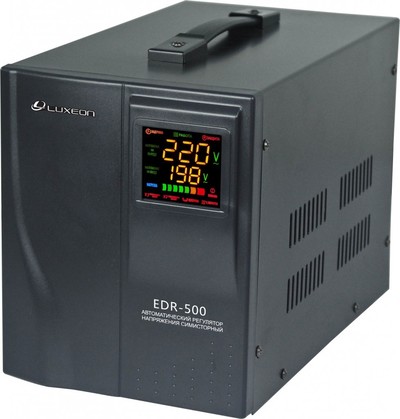
Most preferred type equipment for gas boilers. It works on the principle of forming multiple electrical leads from the secondary winding of the coil.
Current regulation is achieved by means of thyristors and a processor.
Pros:
- Long service life, 10-15 years.
- Response speed 10—20 ms.
- Output voltage adjustment accuracy 5-8%.
- Resistance to frequent voltage surges.
- Immune to cold.
- Resistance to electrical interference.
- Completely silent.
- Protects the boiler even in the event of a short circuit in the transformer.
- Smooth sine wave.
Cons:
- High price.
- There is a possibility of burnout of the thyristors or control board, which requires expensive repairs.
- Requires cooling under high loads.
Relay stabilizers
The cheapest regulators of three types on the market. They produce rough step-by-step voltage adjustment by switching between elements using a relay. This device is suitable for a boiler rather as a compromise, in the absence of funds for a more expensive device.
Pros:
- Compact dimensions.
- Light weight.
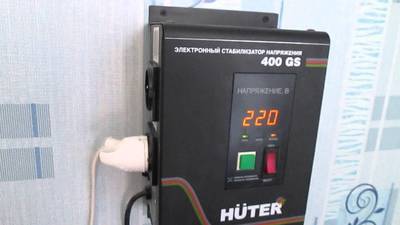
- Reaction time 50 volts per second.
- Resistance to frequent voltage surges.
Cons
- During operation, relay clicks can be heard.
- Flashing lights.
- Low tuning accuracy, 5-8%.
- No sine wave synchronization.
Dimensions and weight
Relay stabilizers have the smallest weight and dimensions, since they do not use cooling or radiators. The weight of such a device 2-4 kg, and the dimensions are on average 135*203*93 mm. Thyristor regulators are the most voluminous due to the cooling system and have the greatest weight, about 10 kg. Average dimensions of such transformers 460*275*178 mm.
Select manufacturer
The same manufacturer does not produce all types of devices. Usually the company concentrates on some one type of devices. There are both imported and domestic stabilizers of good quality.
It is better to give preference to proven companies that are well-known. For example: Resanta, Lider, Energy, Sven, Luxeon — relay stabilizers; LogicPower, Luxeon, Rucelf, Solby, Resanta — electromechanical; Volter, Lider, Luxeon, Shtil, Progress - thyristor transformers. There are many other worthy manufacturers whose products can be found in stores.
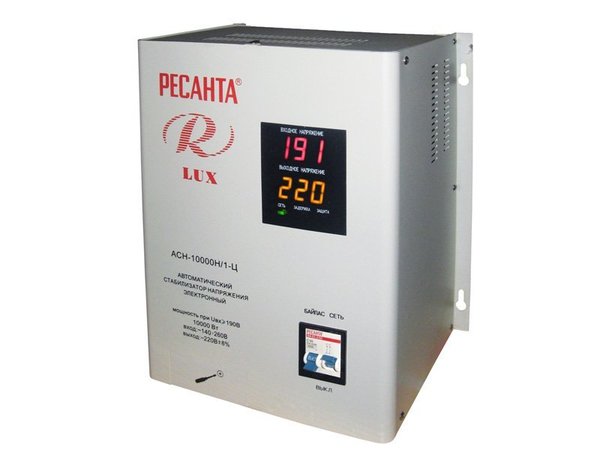
Photo 3. Voltage stabilizer for a relay-type gas boiler. Manufacturer "Resanta".
Cost of relay, electromechanical and electronic devices
The most expensive are the thyristor ones (from 6500), and the cheapest are relay regulators (from 3 thousand rubles.). When choosing a voltage stabilizer for a boiler, the price is not an indicator of higher quality. For the same price, you can buy both an unsuitable device and a reliable one that meets all consumer requirements. For expensive heating equipment, it is better to choose a high-quality transformer from a proven brand.
During the operation of the regulator the price for 1 kW is approximately equal to:
- Relay controller: 700—1500 RUR
- Electromechanical: 900—1600 RUR
- Electronic: 2500-6 thousand rubles.
Useful video
Watch the video, which tells how to choose a voltage stabilizer for a gas boiler, and provides a comparison of several models.
Conclusion
Boiler manufacturers specify power supply requirements in the operating manual and refuse warranty repairs if this point is not met. Gas boilers break down more often are associated with the burnout of the control board due to a power surge, so a voltage regulator is necessary.
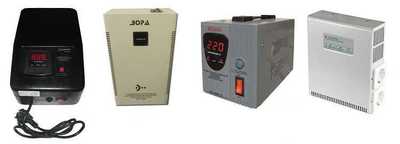
Stabilizer for boiler room buy in a specialized store, where the products have certificates of conformity, and qualified personnel will help you choose the right device for your boiler so that the system will serve for many years.







Comments